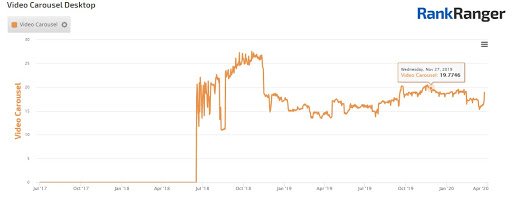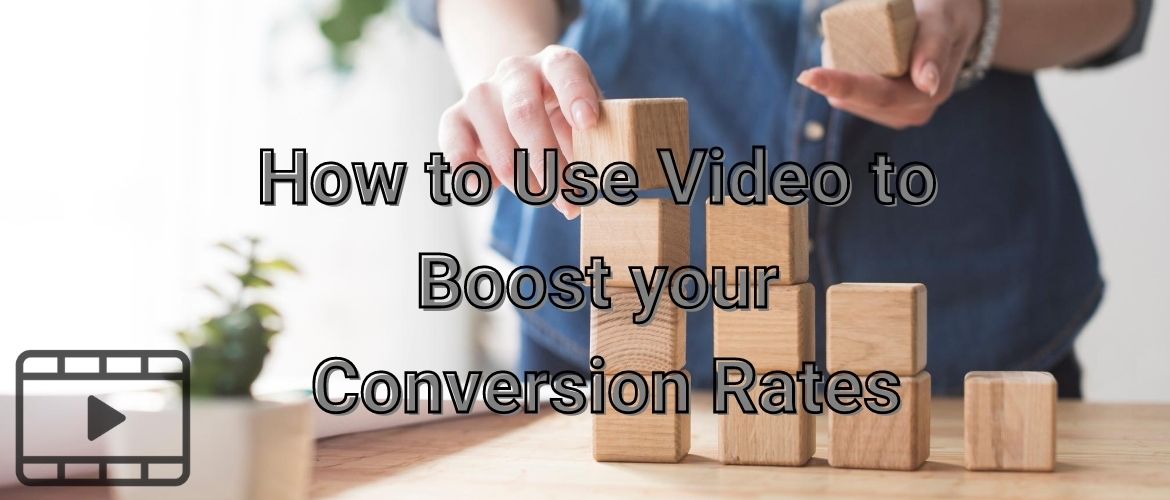How to Use Video to Boost your Conversion Rates
Video is a powerful marketing tool. It can be used to attract, educate, and convert buyers into customers. But often, brands struggle to integrate video marketing into their content strategy. To most, it appears as a bulky, hard-to-create, and is a difficult marketing medium to prove ROI for.
But that is not true. Today, video is easier to create than ever before. With the use of affordable online software apps, you can go from zero videos to creating a complete video marketing funnel (more on this later) to help boost your conversion rates.
Results from incorporating video into your marketing mix are impressive, too. For example, 49% of consumers engage with branded video on Facebook, proof that people pay attention to company videos. And according to Wyzowl, 84% of people say they were convinced to buy a product after watching a video.
If you’ve been on the fence about using video, or haven’t found a way to use it to drive more business, this blog post is for you. In it, I’ll share how to leverage video to drive conversions for your brand.
Table of Contents
A Video Marketing Formula for Boosting Conversions
Using video to drive more conversions isn’t about doing one thing, it’s about getting a number of things right, all of which stack up to generate results. For your approach to be successful, you’ve got to be strategic. Here’s a five-step formula for using video to boost your conversion rates.
1. Build a Video Marketing Funnel
A video marketing funnel consists of a collection of videos specifically created to turn strangers into customers. Video marketing funnels are based on the content marketing funnel design.
At the top of the funnel, videos attract strangers looking for answers to questions as they learn more about a need they have. In the middle of the funnel, problem-aware people become educated and learn about your solution, and the bottom of your funnel is dedicated to converting educated buyers into customers.
So you see, a video marketing funnel is a well-oiled machine designed to convert strangers into customers. Here’s a closer look at each stage of the funnel along with an example.
Attract Stranger at Top-of-the-Funnel
Top-of-funnel or ToFu videos attract as many buyers as possible. They are designed to address specific problems buyers have or need help defining as they become aware of their need for a product like yours.
Whether you’re promoting a new live streaming site or service, or legal services, ToFu videos are educational. They provide clarity or deconstruct concepts your audience has been exposed to but may not understand yet. And this is crucial. If they don’t address these challenges, buyers won’t be ready to learn about your product in the following stage.
Key Metrics: Video View Count and Engagement
Produce videos that attract as many views and as much engagement as possible. More views and engagement shows that your videos are at reaching more of your target audience.
Zoho is a popular business apps solution provider. They also offer a CRM product and know that buyers who’ve just become aware of the need to store customer data and manage it might not know what a CRM is. To help, they created this helpful video.
Educate Leads at Middle-of-the-Funnel
Middle-of-funnel or MoFu videos are educational. They are used to help now problem-aware buyers learn about solutions to their clearly defined problems. Create videos that share how your product works, why it works, and how it fits into their life or business.
Key Metric: Watch-Time
Watch time is an indicator of how many people watch your videos and the duration of their viewing time. A longer watch-time proves that buyers are watching more of your videos.
Project management is a core function of every business but project management software can be boring. To show how their product is anything but, Monday.com created a short video showing how businesses can use their software.
Convert Leads at Bottom-of-funnel
Bottom-of-funnel or BoFu videos convert educated buyers. They include in-depth looks at your product (think demos) and social proof like video case studies and testimonials.
Key metric: Conversions
Conversion can be in the form of sign-ups, leads generated, or sales.
Odoo is a business accounting software that competes with Quickbooks. This case study shows why customers choose Odoo over Quickbook. Through a detailed explanation of what makes Odoo the perfect fit for their business, AuST staff make a strong case for Odoo, one buyer looking at Odoo and Quickbooks will find it helpful.
2. Create Engaging Videos
While video is an engaging medium, not all videos are effective. They don’t capture viewer attention immediately and offer little value. This three-step formula for creating engaging videos will help you create captivating videos designed to generate results.
Create a Powerful Hook
A hook is the first idea you share with an audience. Hooks can be in the form of a statement or offer valuable information that your audience finds attractive and wants to hang around to receive.
Deliver Value
For your videos to generate the best possible watch-time, they must be value-packed. Design them to include nuggets of information your audience finds useful.
What do buyers consider “valuable” information?
A simple rule of thumb we use at Uscreen is to only share information that positively influences our audience’s lives. To find what matters to your audience, ask yourself whether watching your video will give them a new perspective.
Will your audience learn something that they never knew before? Are you sharing information that’s well-guarded in your industry?
Use a Benefit-Focused Call to Action
Calls to action are vital. They direct buyers to what to do next and drive conversions. But not all calls to action are created equally. Some are generic and don’t offer any value. When you create yours, make them specific and share a benefit buyers will gain by taking action.
In our video on how to price online courses, we offer viewers a chance to learn more ways to make money from their content by subscribing to our channel. This tactic is effective. It communicates value, is targeted at video creators (our audience), and is a smart way of building a large following on YouTube.
3. Optimize Your Videos for Search
Today, the number of videos Google indexes has grown considerably. RankRanger’s Insight Graph shows that the search giant now shows 20% more videos in search results.

This presents brands with tons of opportunities. You can create engaging YouTube videos that are optimized videos for search. Doing so will help drive more traffic to your content, traffic that can be converted. Here are three ways to optimize your video for search:
1. Optimize Titles & Description
Use keywords in your title and descriptions but do so sparingly. Including your keyword too many times can appear spammy to YouTube and Google, resulting in a penalty and poor ranking.
2. Optimize Script Using Keywords
Using keywords in your script may not seem like an obvious optimization tactic but it is. While YouTube and Google use text and metadata to find relevant terms users search for, both platforms have evolved their algorithms.
Today, YouTube automatically creates close captions for every video uploaded. While close captions are optional for viewers, the platform still recognizes the caption text. And this matter as captions include terms your video should be optimized for.
3. Use Tags
Like titles and descriptions, tags help YouTube and Google tell what your video is all about. Use them to help both platforms identify topics your videos cover. Once again, use tags sparingly. Too many will confuse both platforms as they won’t know what your video is really about and therefore won’t rank it high in search.
4. Use Videos on Web Assets
Position your video in places where buyers go. Research by Wyzowl shows that 92% of people watch explainer videos for more information on products. So add yours to website home pages, product pages, and landing pages. Using videos designed to educate and convert buyers in various places will help speed the sales cycle.
5. Promote Videos for Greater Reach
Dedicate some budget to promoting videos using different paid media platforms. While most brands may be cautious about spending money on online ads, think of it as an investment instead of a gamble.
Today’s platforms are capable of targeting your ideal customer. You can use them to advertise videos on merchandise or promote your live stream channel. Paid media also allows you to get in front of your buyers faster than organic marketing can.
Conclusion
Video is an effective marketing tool. But to use it and generate higher conversions, you’ll need to be strategic. Take a long-term approach. Create engaging videos that reach as many buyers as possible for the best results.
AUTHOR:
Amir Shahzeidi
Bio:
Amir is the digital marketing manager at Uscreen, an all-in-one video monetization platform that empowers video entrepreneurs and creators to monetize their content and build thriving businesses around their videos.

I’m not satisfier for this Question What is CRM? can you more explain about CRM.
I’m not satisfier for this Question What is CRM? can you more explain about CRM.